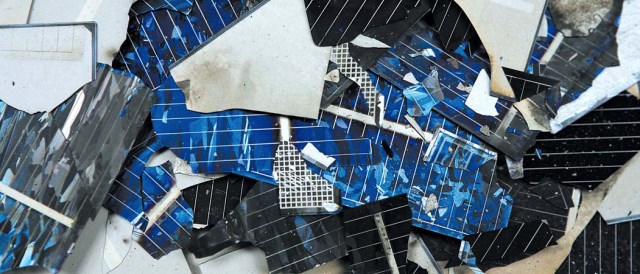China has set a goal of 12.5 GW of newly installed photovoltaics annually by 2017 – a level equivalent to more than a third of the global market in recent years. Japan is also booming. Craig Morris says the news is more than a light at the end of the tunnel for the solar sector – it’s the end of the tunnel.

Germany’s solar sector – rising like Phoenix from the Ashes? (Photo by Solarworld)
In mid-May, China announced a new target of 70 GW of photovoltaics by 2017 in an effort to curb demand for coal power and reduce smog. Because the Chinese had 20 GW at the end of 2013, the country will now need to install 50 GW over the four years from 2014-2017, equivalent to 12.25 GW per year.
Throw in Japan, which has probably installed around 7 GW (the official figures are not yet in) since 1 April 2013, and these two countries alone are worth 20 GW. Like China, Japan is shaping up to be a reliable market over the midterm; the country currently has a reported 31 GW of solar in the pipeline.
Over the past few years, the PV sector has struggled with surplus capacity. While the sector could have produced an estimated 60 GW a few years ago, the market was stuck at around 30 GW in 2011 and 2012, but grew to 38 GW last year. Indeed, solar is about to start growing worldwide, not only in Asia, but also in the Middle East and Africa. Likewise, after a record year for PV in the United States, the US had an estimated pipeline of 43 GW at the end of last year and will also be a reliable market going forward. Market analysts at Solarbuzz now estimate the global market at 50 GW this year.
For German PV manufacturers, the news probably comes too late. Indeed, Japan’s Sharp Solar is reportedly now the biggest solar panel shipper in the world, the first time a firm outside of China has been at the top since 2009. Former German solar giant SolarWorld, which was king of the hill back then, is making a turnaround, but the company is now a relatively small fish in the pond. And although lots of German PV firms have gone bankrupt, some small solar panel sellers, such as Phoenix Solar and Solar-Fabrik, are still keeping their heads above water. (Interestingly, there seems to be no list of firms in the German solar sector that declared bankruptcy last year; if you know of one, please drop me a comment below.)
Elsewhere along the value chain, however, the international news is not too late. Germany is still home to one of the biggest producers of solar silicon, Wacker, and the firm is doing well. Upstream of solar silicon, we have solar cell producers. Germany’s Q-Cells is now part of a Korean conglomerate but still has its headquarters in Germany; like so many other firms, it has spread out along the value chain and now also sells solar panels and complete systems. Most importantly, the firm increasingly looks healthy.
Greater global demand will also mean demand for new, more advanced production lines, and Germany has numerous providers of production equipment for the solar sector. Indeed, this sector might benefit the most from global PV growth. Centrotherm is one example; Roth & Rau, another. Both have reported a brighter outlook for 2014, though the figures for 2013 still looked bad.
It’s not the outcome the Germans hoped for in 2004, when they rolled out full-scale feed-in tariffs for PV, but it is a clear improvement over the situation I reported on in March 2013. Though the statement may not apply for every company, in general it seems that if you have survived the consolidation phase this far, there is not just light at the end of the tunnel. You may be emerging from the tunnel already into the full light of the sun.
Craig Morris (@PPchef) is the lead author of German Energy Transition. He directs Petite Planète and writes every workday for Renewables International.